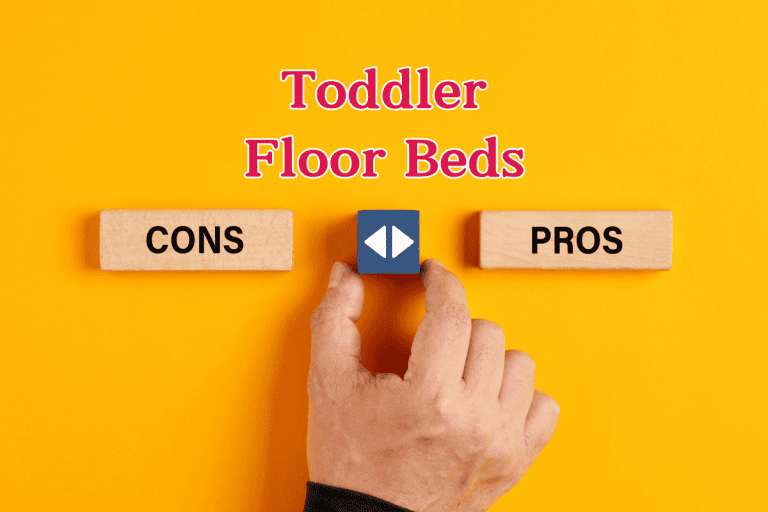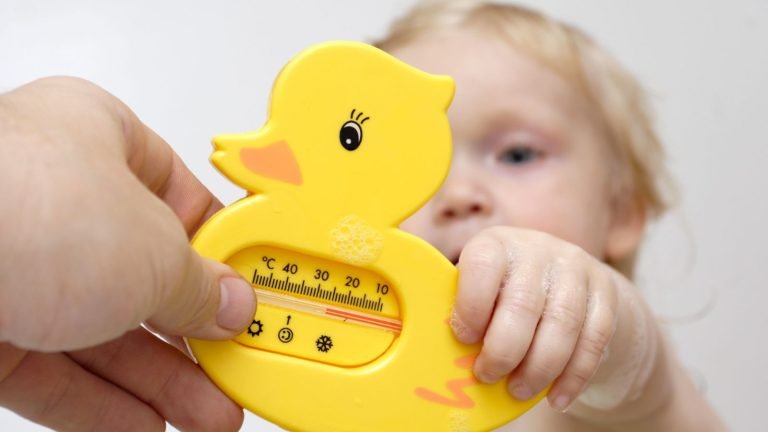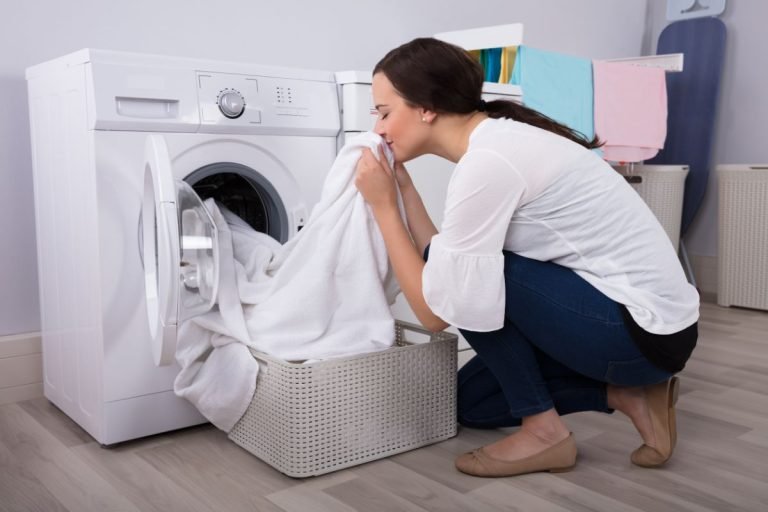Baby Bath Safety Precautions: Ensuring Bath Time Bliss in 2025
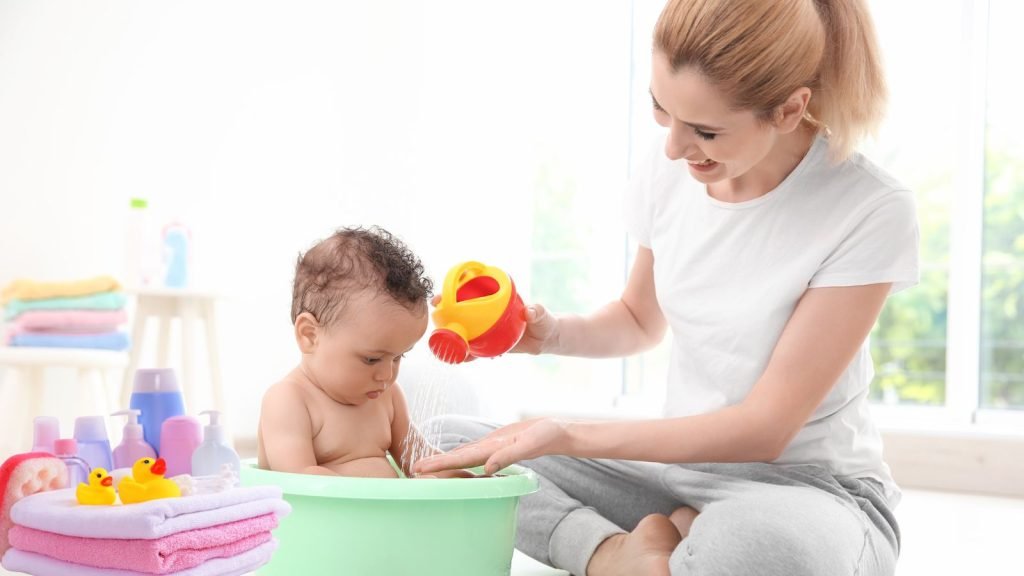
Are you tired of worrying about Baby Bath Safety Precautions? You’re not alone. Many parents find themselves checkmated by the potential risks present in the bathroom environment. But fear not! With the right strategies and expert guidance, you can turn bath time into a peaceful and enjoyable experience for you and your baby.
In this blog post, we’ll uncover essential bath safety tips, practical advice, and expert insights to help you create a secure and relaxing atmosphere for bathtime bonding. Say goodbye to stress and hello to precious moments with your little one. Let’s make bath time a breeze!
Key Takeaway – Baby Bath Safety Precautions
- Constant Supervision: Never leave your baby unattended.
- Safe Bathing Environment: Maintain proper water temperature and use non-slip mats.
- Gentle Handling and Products: Use gentle, baby-safe products to support your baby properly.
Preparing for Bath Time
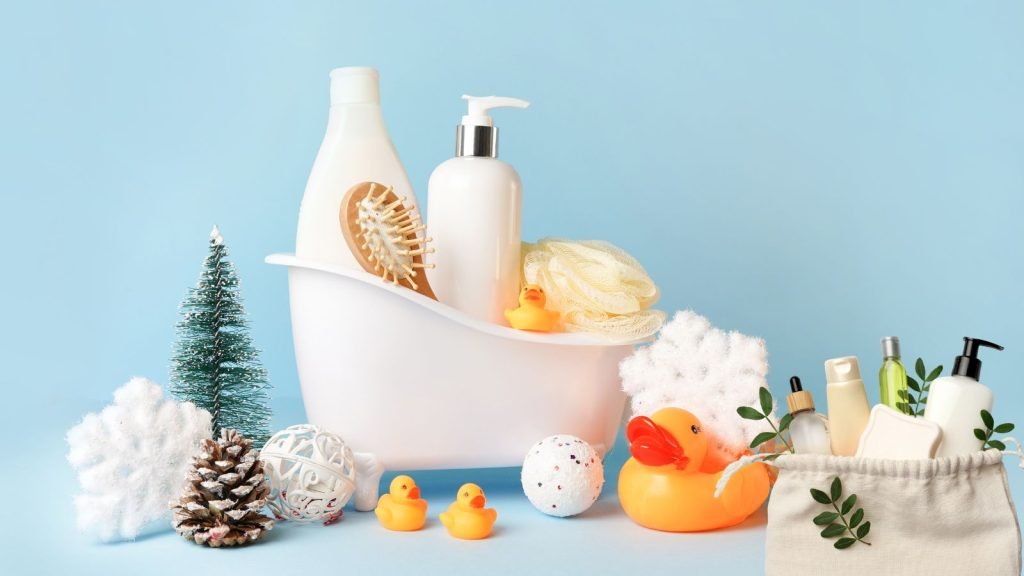
Make sure you have everything you need nearby, like towels and soap. It’s also good to have a warm room for your baby to be comfortable. Additionally, preparing for properly supporting and handling your baby’s body and head during bath time is crucial to ensure their safety and comfort.
Gathering Necessary Supplies
Before starting your baby’s bath, gather all the necessary supplies within easy reach. This includes a soft towel, gentle baby soap or cleanser, a cup for rinsing, a bath thermometer for babies to check the water temperature, and any other bathing accessories you may need. Preparing everything beforehand will prevent you from leaving your baby unattended during the bath.
Ensuring a Safe Environment
Create a safe and comfortable environment for your baby’s bath time. Make sure the bathroom is warm and free from drafts. Use non-slip mats in the tub or on the floor to prevent slipping. Cover any hard surfaces with soft towels or mats in case of falls. Keep electrical appliances away from the bathing area, and never leave your baby unattended, even for a moment.
Setting up the Bathing Area
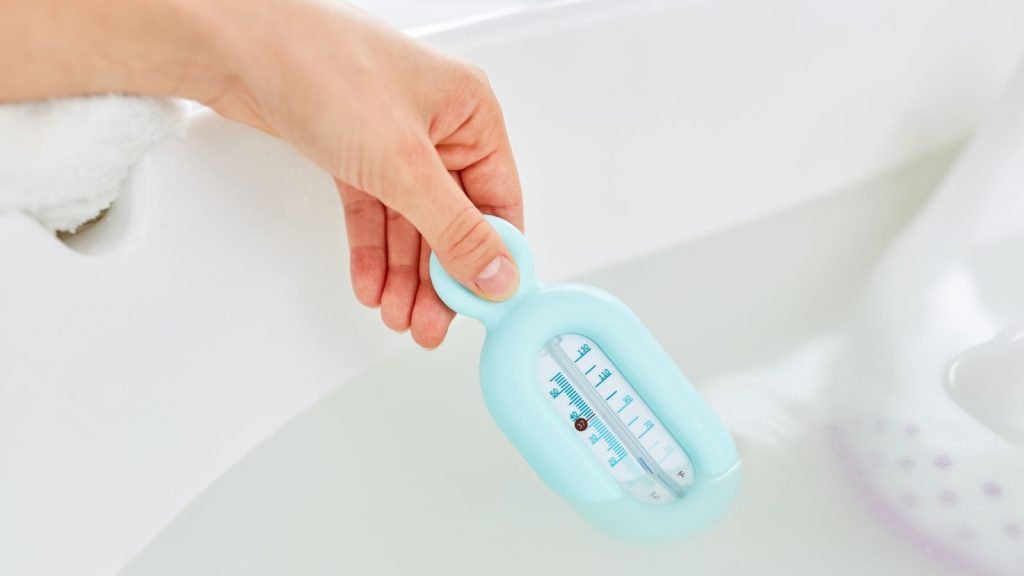
Fill the tub with warm, soapy water and put down something to stop slipping. Keep all your baby’s bath stuff close by to make things easier. Additionally, it’s important to avoid using bath seats or rings, as they may not provide the necessary support and can pose risks to your baby’s safety during bath time.
Choosing an Appropriate Bathtub or Sink
For newborns and young infants, a small bathtub or a clean kitchen or bathroom sink can work well for bathing. As your baby grows, you’ll need to transition to a larger tub specifically for babies and toddlers. No matter what the baby tub you use, ensure it has a textured, non-slip surface and is an appropriate size for your baby’s current stage of development.
Preparing the Water Temperature
Maintaining a safe, lukewarm water temperature is crucial when bathing your baby. Use a specialized bath thermometer and aim for around 100°F (37.8°C) or slightly cooler. Always test the water thoroughly with your wrist or elbow before placing your baby in the tub to ensure it’s room warm and not too hot.
Organising Bath Toys and Products
Before starting the bath, gather any bath toys, soft washcloths, towels, and bathing products and keep them within easy reach. When selecting baby soap, shampoo, and cleansers, opt for gentle formulas for delicate infant skin.
Avoid products containing harsh chemicals, dyes, or fragrances that could potentially irritate your baby’s sensitive skin and eyes. Have a clean towel or robe ready to swaddle your baby after the bath.
Ensuring Proper Support and Handling
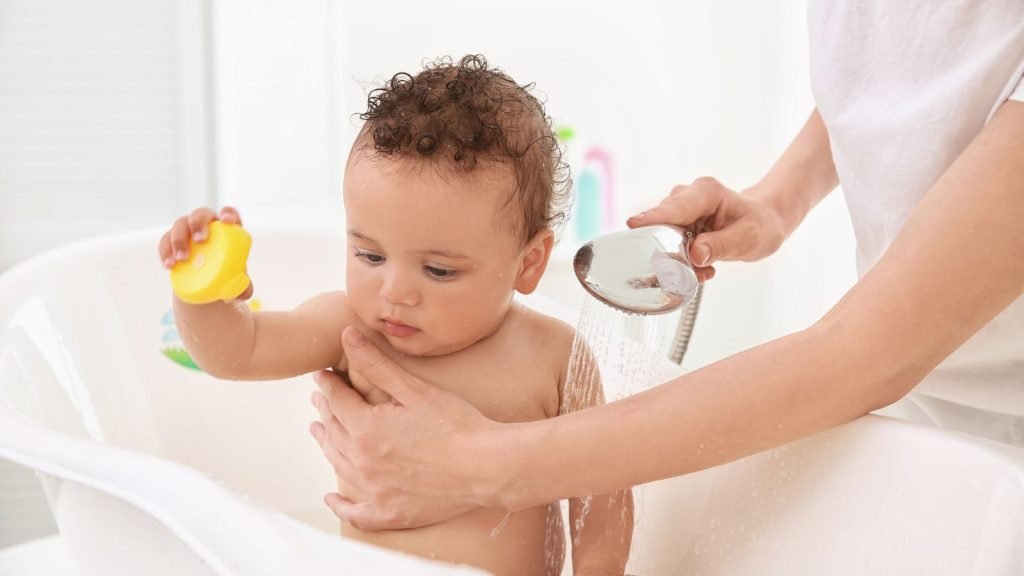
Hold your baby securely with one hand, ensuring you properly support the baby’s body and head, especially the neck area for newborns and younger infants.
This is crucial to prevent accidents and ensure the baby’s head remains above water, reducing the risk of accidental submersion. Gently place a wet washcloth over them with the other hand and talk gently to them to help them feel safe.
It’s important to maintain shallow water levels for the baby’s body and to dry the baby’s head thoroughly after bathtime to prevent them from getting chilled and irritated.
Holding and Supporting the Baby
Proper support and handling are crucial during baby bath time to ensure the safety and comfort of your baby’s body and head. Keep one hand firmly on your baby, supporting its head, neck, and back.
For newborns, use your non-dominant hand to carefully support their head just above the water level, ensuring their face remains uncovered and their head remains above water to reduce the risk of accidental submersion. This gentle handling is essential for the baby’s safety and comfort, particularly for newborns and younger infants.
You can support babies seated or reclined in the tub as they age, always maintaining shallow water levels for their bodies and ensuring their heads are dried thoroughly after bathtime to prevent them from getting chilled and irritated.
Preventing Slips and Falls
Babies have little control over their movements, so taking precautions against slips and falls is essential. Use a non-slip bath mat and maintain a secure grip with at least one hand on your baby. Move slowly and avoid sudden jerky motions that could cause your baby to lose their balance or fall.
Adapting Techniques for Newborns and Older Infants
Bathing techniques need to be adapted as your baby grows. Newborns may do better with a sponge bath until their umbilical cord stump falls off.
Older infants can be immersed in the tub but may need support sitting upright until they can sit unassisted. Pay close attention to your baby’s developmental stage and comfort level, modifying your approach as needed.
Bathing Techniques and Frequency
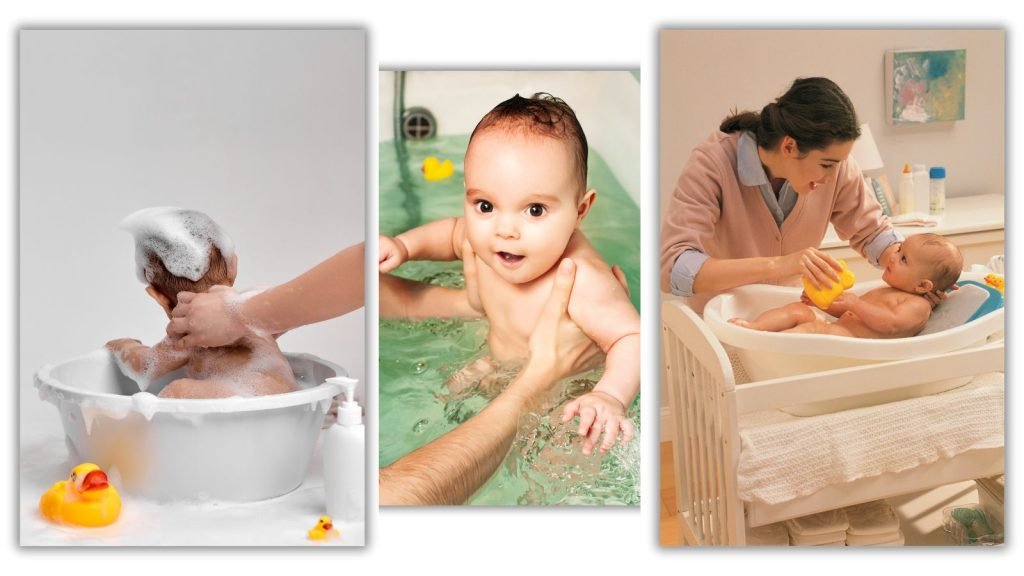
Use gentle soap, and be careful not to bathe your baby too often – maybe a few times a week. Gentle bathing techniques are crucial, especially for babies with sensitive skin or conditions.
Use lukewarm water and fragrance-free, hypoallergenic baby soaps and shampoos. Gently pat the baby’s skin dry to prevent irritation or flare-ups, avoiding harsh rubbing.
Recommended Bathing Frequency
Experts recommend giving newborns a sponge bath 2-3 times weekly until the umbilical cord stump falls off. After that, you can transition to tub baths as often as every other day. However, don’t bathe your baby too frequently, as it can dry out their delicate skin. Most babies only need a bath 1-2 times weekly to stay clean.
Step-by-Step Bathing Process
- Get everything you need: Before you start, ensure you have everything, like baby shampoo, a soft towel, and a cup.
- Check the water: Test the water with your hand to ensure it’s not too hot or cold.
- Take off baby’s clothes: Gently remove your baby’s clothes.
- Put the baby in the tub: Slowly and carefully put your baby into the water, making sure you hold them safely.
- Wet the hair: Use your hand or a cup to wet your baby’s hair.
- Put on shampoo: Put a little bit of baby shampoo on your hand and rub it into your baby’s hair.
- Rinse well: Rinse all the shampoo out of your baby’s hair.
- Wash the body: Use a little bit of baby wash on a soft cloth or your hand to clean your baby’s body.
- Rinse again: Rinse your baby’s body with clean water to remove any soap.
- Keep warm: Pour warm water over your baby with a cup to keep them warm.
- Drain the water: Let the water out of the tub when you’re done.
- Wrap in a towel: Lift your baby out of the tub and wrap them in a soft towel to keep them cozy.
Gentle Cleansing and Rinsing
Use a small amount of gentle, tear-free baby shampoo and body wash that is fragrance-free and hypoallergenic, specially formulated to be gentle on the baby’s skin, particularly for babies with sensitive skin or skin conditions.
Rub it lightly over their hair and body with a soft washcloth or your hands, avoiding their eyes. Rinse thoroughly to remove all soap residue, ensuring water doesn’t enter the baby’s ears, eyes, or nose. When drying, use gentle patting motions to avoid friction and potential irritation on the baby’s skin. Pat dry instead of rubbing to prevent irritation.
Bathing Safety Measures
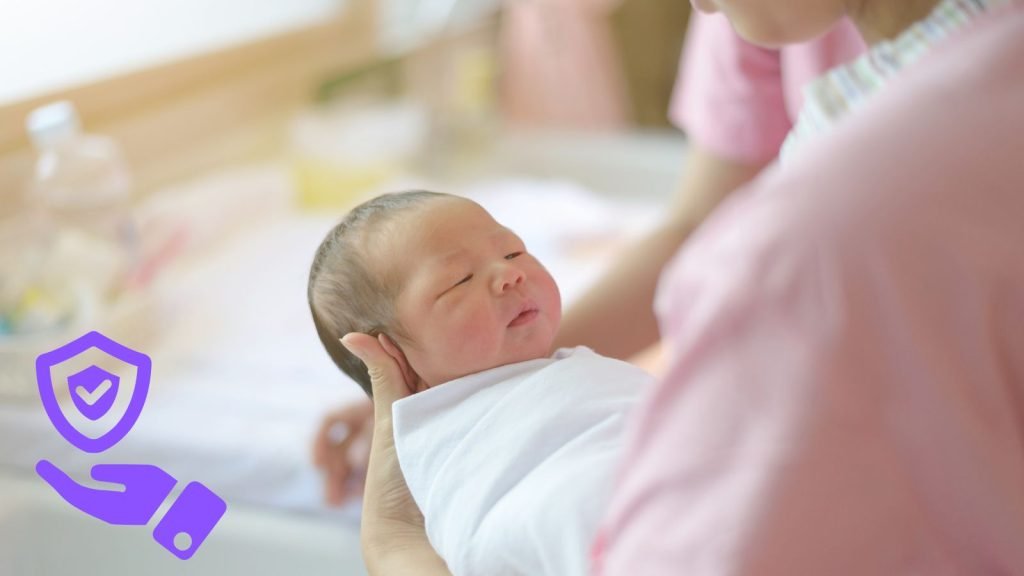
Ensure the hot water isn’t too hot, and never leave your baby alone in the tub, as bathtub deaths often involve children due to the risks of accidents and drowning. Watch them closely to keep them safe.
NEVER Leave Baby Unsupervised
One of the most critical bath time safety precautions and rules is never leaving your baby unattended, even for a few seconds. Many bathtub deaths involve children, highlighting the severe risks of leaving a baby alone in the bath.
Babies can quickly get into dangerous situations and drown in just a few inches of water. Keep your baby within arm’s reach and your eyes on them to prevent such tragic accidents.
DON’T Put Baby in Tub While Water is Running
Never place your baby in the bathtub while the water is still running. This creates a scalding risk if the water suddenly becomes too cold or too hot. Run the water first, check the temperature thoroughly, and then put your baby into the tub.
ONLY Use Baby-Safe Shampoos and Soaps
Use only tear-free, gentle, hypoallergenic bathing products specifically formulated for babies to prevent irritation or flare-ups on the baby’s skin. Adult shampoos, soaps, and other products may contain harsh ingredients for an infant’s delicate skin and eyes.
It’s crucial to select fragrance-free and hypoallergenic baby soaps and shampoos that are gentle on the baby’s skin, especially for those with sensitive skin or certain skin conditions.
INVEST in Child-Proofing Your Tub
Enhance your bathtub’s safety with childproofing products like non-slip bath mats and tub guards to cover faucets and toilet locks. These simple additions create a safer, more secure bathing environment.
PRACTICE Safe Bath Time Habits
Always model and practice safe habits, such as never leaving the room, staying sober, keeping hot drinks/objects away, preventing burns, and having everything you need within reach before starting. Consistency with these habits reduces risks.
Supervision and Precautions
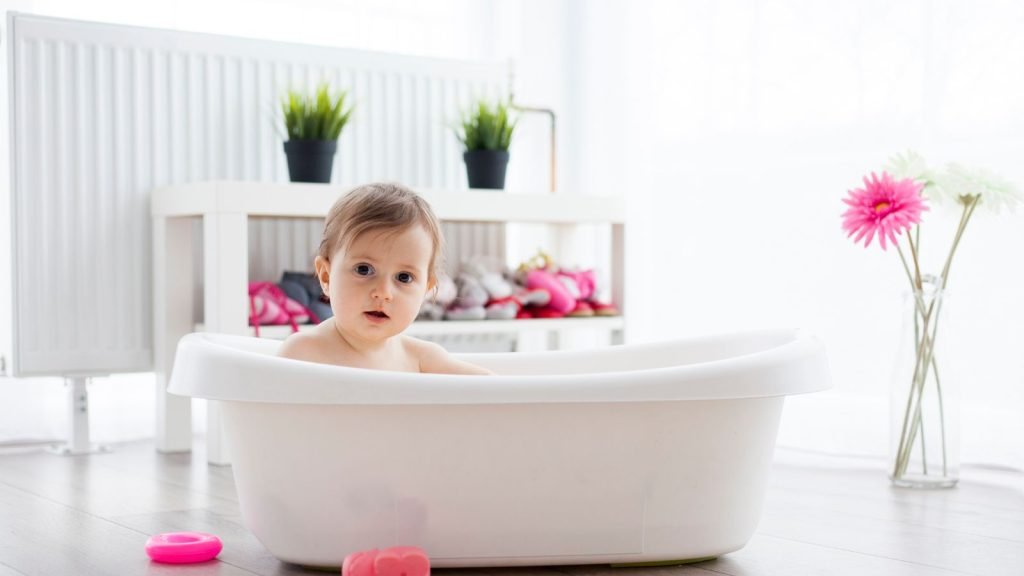
Always keep an eye on your baby during bath time to prevent accidents, including the serious risk of bathtub deaths that often involve children. Stay focused and not get distracted; constant supervision is crucial for their safety.
Constant Adult Supervision
Proper supervision is vital during baby bathtub time to prevent accidents, including the risk of bathtub deaths, which often involve children. An adult should always be present and within arm’s reach, providing constant supervision to ensure safety. Never leave your baby unattended in the bath, even briefly, as it only takes a few inches of water for a dangerous situation to arise.
Avoiding Distractions and Multitasking
Bath time requires your full, undivided attention. Avoid distractions like phones, television, or attempting to multitask with other chores. Stay focused solely on your baby to react quickly if needed and prevent potential accidents from happening.
Recognizing Potential Dangers
Always remain vigilant and aware of potential bath time dangers. These include wet, slippery surfaces, faucets, and fixtures that could cause bumps/scrapes, small objects that are choking hazards, and the ever-present drowning risk. Identify and address any other bath safety hazards before beginning.
Dealing with Accidents and Emergencies
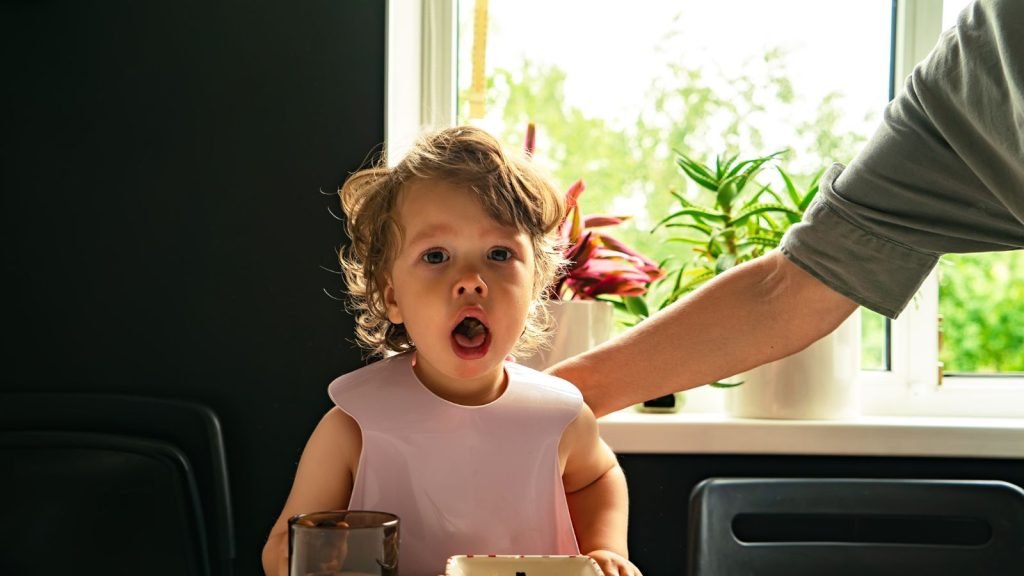
Learn what to do if something goes wrong, like CPR, and have emergency numbers handy. Knowing how to properly support and handle the baby’s body during these situations is crucial to ensure their safety and comfort.
Responding to Choking or Drowning Incidents
While extremely scary, it’s crucial to remain calm if your baby starts choking or experiences a drowning incident during bath time. For a choking baby, give 5 back blows between the shoulder blades, then 5 chest thrusts if that doesn’t work. For a submerged infant, immediately begin infant CPR – 30 chest compressions at 100-120 per minute, followed by 2 rescue breaths.
First-Aid Measures
For other bath-time injuries, like bumps, cuts, or burns, quickly remove your baby from the tub and administer appropriate first aid. Apply pressure with a clean cloth to stop any bleeding. Run cool water over burns and cover with a sterile dressing. Keep your baby warm and monitor closely for signs of shock.
When to Seek Medical Attention
Don’t hesitate to call emergency services if your baby loses consciousness, has trouble breathing, or you suspect a more serious injury. For minor incidents like small bumps or scrapes, consult your pediatrician to ensure
After Bath Practices
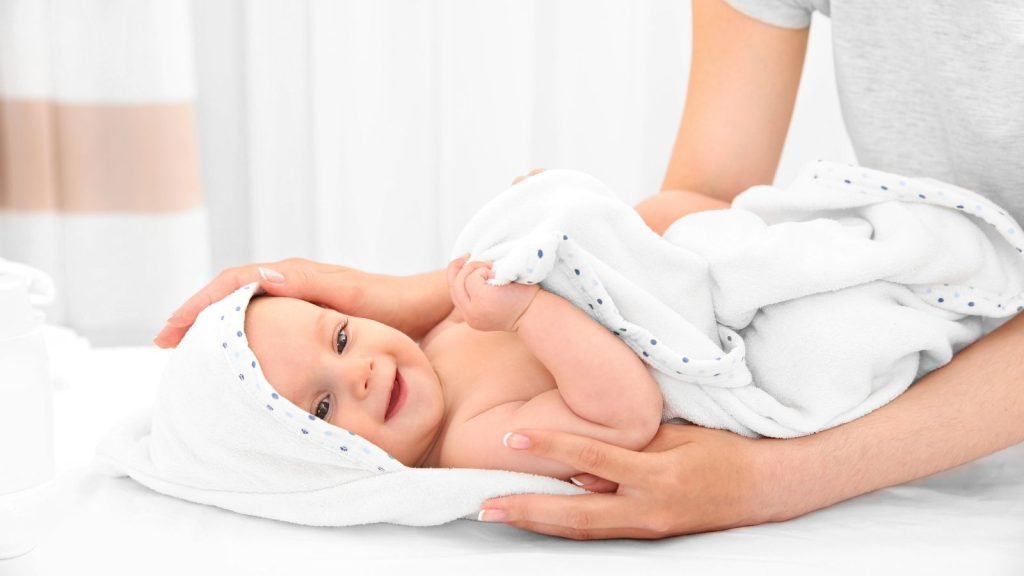
Dry your baby gently with a soft towel and apply a gentle, fragrance-free moisturizer to keep their baby’s skin soft and prevent dryness.
Creating a Calming Baby Bath Routine
A consistent and soothing bath routine can help your baby relax and make bath time enjoyable. Implementing a calming baby bath routine involves setting a comfortable atmosphere, using gentle, warm water, and incorporating soothing elements like soft music or dim lighting. Keeping the process predictable and reassuring can make a big difference in your baby’s comfort and enjoyment.
Drying and Dressing the Baby
Once bath time is over, it’s crucial to gently pat your baby’s skin dry with a soft, absorbent towel, especially for babies with sensitive skin. This method helps avoid friction and potential irritation, and it is particularly careful around creases and folds where moisture can linger.
After drying, apply a gentle, fragrance-free moisturizer to the body temperature to lock in hydration. Then, dress your baby in clean, comfortable clothes suitable for the room temperature.
Nail Health and Safety
Bath time allows you to check and trim your baby’s nails if needed. Use baby nail scissors or clippers designed for infants to avoid nicking their delicate skin. Keeping nails trimmed helps prevent accidental scratches.
Bathing Twins or Multiple Infants
Bathing multiples simultaneously can feel daunting, but with proper preparation, it’s manageable. Have another adult assist you or bathe babies one at a time. Use a double bathtub or a large single tub lined with a non-slip mat for bathing together. Go slowly, always keeping one hand on each baby. Consider bathing multiples separately until you feel comfortable with the process.
Summary
Bath time is an important moment for bonding and getting clean. Keep it safe by checking water temperature, using non-slip mats, and never leaving your baby alone. Prepare everything beforehand, and always support your baby’s head and body.
Be gentle when cleaning, avoid soap in sensitive areas, and moisturize after. With someone watching over, a routine, and a calm vibe, bath time becomes a special time for you and your baby to connect.
Bath Time Frequently Asked Questions
What safety precautions should be taken when bathing a baby?
Always keep one hand on your baby, check water temperature, never leave them alone, and keep supplies nearby. Use gentle products made for babies.
What is the best bath time?
It depends on your baby’s schedule, but many find that a warm bath before bedtime can help relax and prepare them for sleep.
What are the benefits of bathtime play?
Bath time can encourage sensory exploration in children, enhance bonding between parent and baby, and promote relaxation before bedtime.
What are the benefits of bathing daily?
Daily baths can help keep a baby’s skin clean, reduce the risk of infections, and establish a comforting routine.
Do baths relax babies?
Yes, warm sponge baths can be soothing for babies, helping them relax and unwind before bedtime.
